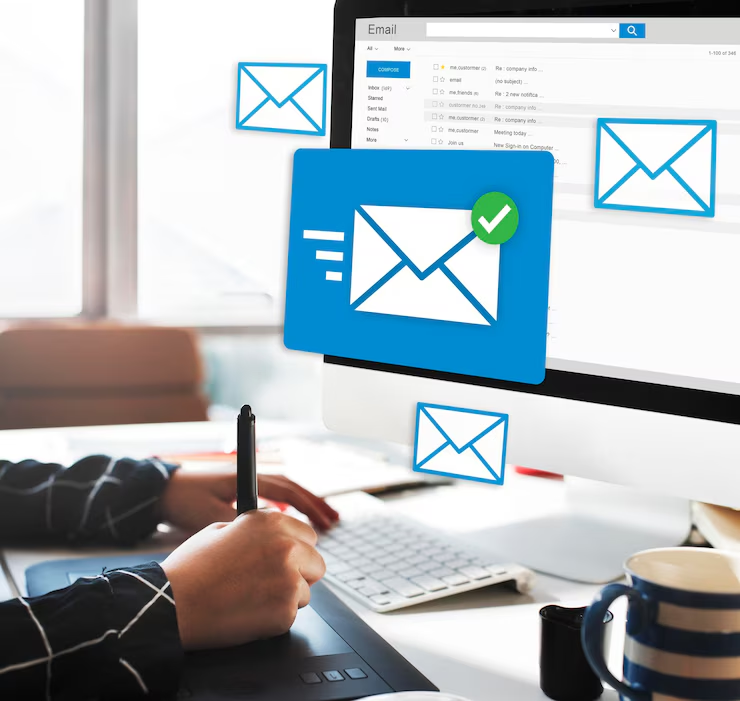Email campaigns have long been a staple in digital marketing. They provide a direct line of communication with your audience, allowing businesses to share key messages, promotions, and updates. However, to run a successful email campaign, it’s crucial to understand the intricacies involved. Whether you’re using a sophisticated candidate engagement platform or a primary email service provider, the principles of effective email marketing remain the same. Let’s dive in and explore the foundational aspects of email marketing.
Understanding Your Audience
Knowing your audience is one of the most essential elements in creating a successful email campaign. You can customize your messaging to your audience’s unique needs by breaking them down into segments based on their demographics, behavior, and interests. It’s imperative to understand your readership in order to produce pertinent material that they will find engaging. This entails carrying out in-depth research and creating comprehensive client personas using data analytics. Understanding your audience better will help you create communications that speak to them directly, boosting engagement and lowering unsubscribe rates.
Creating Compelling Content
Creating compelling content is critical to keep your subscribers engaged. This means writing clear, concise, and personalized messages. Use striking visuals, thought-provoking questions, and strong call-to-actions (CTAs) to make your emails more attractive. According to HubSpot, content that addresses the pain points of your audience tends to perform better. Another effective strategy for humanizing your brand and establishing an emotional connection with your audience is storytelling. Case studies, success stories, and client endorsements can increase credibility and motivate readers to act.
Optimizing Email Design
In order to capture and maintain the attention of your recipients, email design is essential. Make sure your emails are responsive because a significant portion of your users may access them on mobile phones. Use basic layouts, appropriate typefaces, and colors that are consistent with your brand. Adding lots of white space to writing can improve readability and engagement. You can find out which design elements work best for your target audience by conducting A/B testing. Making ensuring that your emails are readable by everyone, including people with disabilities, will help you connect with a larger audience and enhance user experience.
Personalization and Segmentation
Emails with personalization greatly increase engagement rates. Segment your audience with your email marketing solutions according to their purchasing patterns, inclinations, and previous brand interactions. Using the recipient’s name or making product recommendations based on their past purchases are examples of personalization. This strategy improves client retention and loyalty while also making your messaging more relevant. You can continuously improve your segmentation approach and make sure that your messages are timely and relevant by utilizing data analytics.
Analytics and Performance Metrics
For continuous improvement, tracking your email marketing with analytics is essential. Important performance metrics to keep an eye on include open rates, click-through rates (CTR), conversion rates, and unsubscribe rates. By using resources like Google Analytics to gather information about how your audience reacts to your emails, you can adjust your strategy. You can see trends and make wise decisions if you routinely keep an eye on these signs. Understanding these signs can also help you set realistic goals and monitor the success of your efforts over time.
Best Practices and Common Pitfalls
Even while email marketing has a lot of potential, there are several frequent mistakes to avoid. Steer clear of deceptive information, overuse of exclamation points, and spammy subject lines. Give recipients a simple option to unsubscribe at all times. You may increase marketing efficacy and audience trust by following best practices, which include keeping an error-free email list and abiding by data protection laws. Your campaigns will continue to be valuable and pertinent if you keep up with market developments and test various email components on a regular basis. Additionally, putting more of an emphasis on providing value than merely advertising your goods might improve the way people view your company.
Conclusion
Digital marketers still have email marketing as a valuable tool in their toolbox. Understanding your audience, creating engaging content, honing the design, and routinely monitoring the campaign’s performance can all significantly boost its chances of success. Remember to personalize your messages and follow advised procedures to avoid making the same blunders over and over again. If you prioritize giving value and adopt a strategic strategy, your email campaigns can drive growth and improved engagement for your organization. Using analytics data, you can make intelligent decisions and consistently increase the effectiveness of your email marketing efforts.





